Cancer
Latest
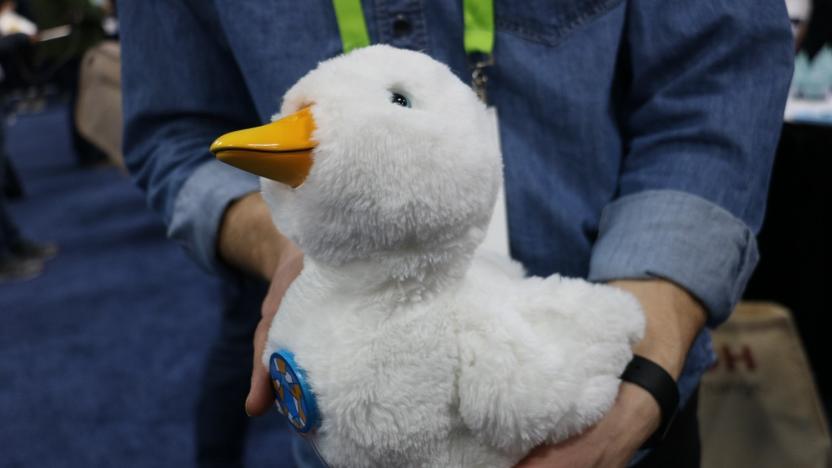
This robot therapy duck comforts kids with cancer
CES is flush with giant TVs, smart fridges and plenty of other superfluous nonsense. So it was a breath of fresh air when insurance company Aflac and a company called Sproutel showed up with a robot duck designed to comfort children with cancer. The My Special Aflac duck is, in many ways, not terribly different from other toy pets like Furby or an Aibo. It's cute, cuddly and packed with sensors that allow it to interact with you. Scratch under its chin and the duck will lift its head and let out an appreciative little quack. Find its ticklish spot under the wing and it'll shake about and erupt in laughter.

Researchers use sperm to deliver cancer drugs to tumors
Chemotherapy has a lot of terrible side effects and that's partly because the drugs being used to fight cancer also attack healthy cells. Figuring out a way to deliver drugs to tumors without affecting healthy tissue is a challenge and a problem that researchers are trying to solve. One group working on this problem, New Scientist reports, is a team at the Leibniz Institute for Solid State and Materials Research Dresden and in a recent study, they showed that sperm could be turned into an effective drug delivery tool.

Researchers use electric currents to detect cancer in human tissue
In a study published recently in Angewandte Chemie, researchers demonstrated that an imaging technique called scanning electrochemical microscopy could become a very useful medical tool. Rather than having to use additional chemicals like dyes or fluorescent markers to get a good look at tissue, this method uses electrochemical probes to detect natural biomolecules around the tissue.

An AI detected colorectal cancer with 86 percent accuracy
We've heard of many different uses for AI within the medical field, including for prediction of heart attacks and detection of Alzheimer's. Now, it looks as though machine intelligence could be applied to early detection of cancer as well. A group of Japanese researchers has figured out a way to use AI to spot colorectal cancer tumors before they become malignant, according to Inverse.

Navajo Nation may undo genetic research ban in hopes of better care
The Navajo Nation banned genetic studies in 2002 due to concerns over how its members' genetic material would be used, but, as Nature News reports, the Navajo are considering a reversal of that policy. An oncology center is set to open next year on Navajo lands and the tribe's research-ethics board is looking into allowing some genetic research to take place at the facility.
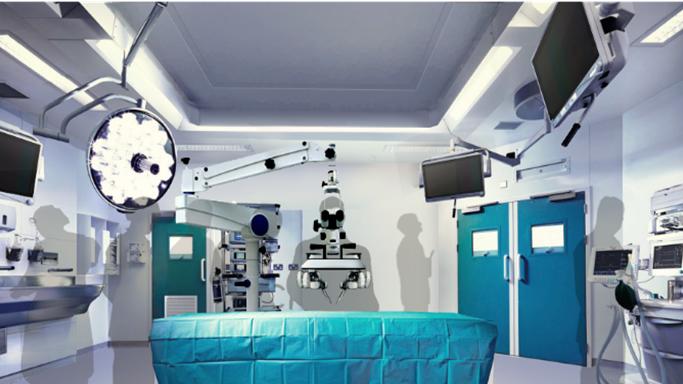
Motion-controlled robot performs delicate microsurgery
Surgeons in the Netherlands recently performed a procedure requiring immense precision as it's carried out on super tiny blood and lymphatic vessels. The surgery is extremely difficult to do and only a handful of surgeons are willing to do it. But for this particular procedure, Maastricht University Medical Center+ surgeons utilized a robot that was built to perform these sorts of complex microsurgeries right alongside doctors.
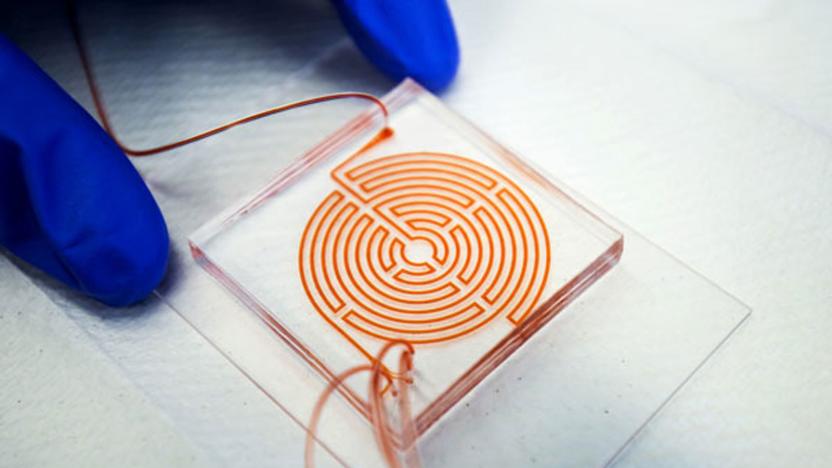
Maze-like chip helps spot aggressive cancer cells
It's difficult to spot cancer cells -- just one in a billion blood cells are cancerous. How do you isolate them to know the trouble someone is facing and eventually treat it? By drawing the kind of mazes you enjoyed as a kid, apparently. Researchers have developed a microfluidic chip that uses a circular labyrinth to separate cancer cells from the rest of your bloodstream and spot the stem-like cells that will aggressively spread that cancer. Ultimately, it's a creative use of physics. The curves tend to push larger cancer cells forward (smaller regular cells cling to the walls), while the corners mix things up and put white blood cells in an ideal position.

Recommended Reading: Behind the scenes of 'Blade Runner 2049'
The Replicant: Inside the Dark Future of 'Blade Runner 2049' Brian Raftery, Wired The much-anticipated Blade Runner sequel is due to hit theaters in two weeks, but Wired wants to make sure you're properly prepared for that viewing. Step behind the scenes of Blade Runner 2049 for a look at the sci-fi, dystopia and darkness.

Color's breast and ovarian cancer DNA test is $99 through October
During Ovarian Cancer Awareness Month (September) and Breast Cancer Awareness Month (October), genetic testing company Color is reducing the price of its new BRCA Test. The test -- which looks for mutations in the BRCA1 and BRCA2 genes that are linked to breast and ovarian cancer -- has a regular price of $149, but for this month and the next, customers can get it for $99.
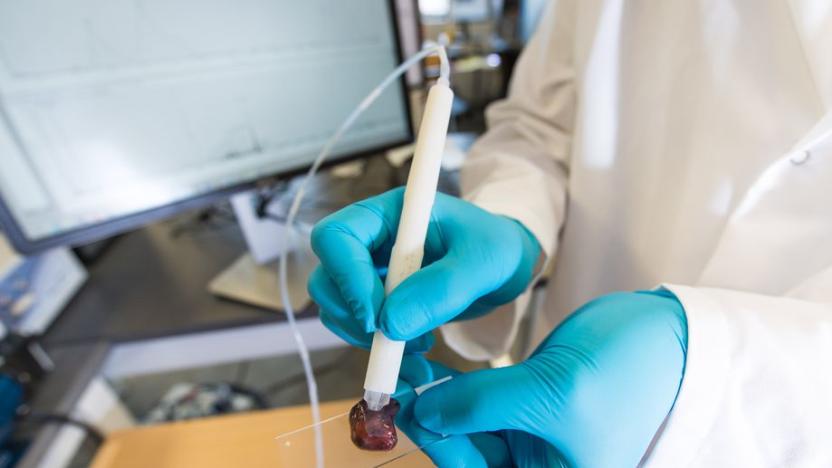
This pen can determine whether tissue is cancerous in ten seconds
When surgeons are removing a tumor from a patient, determining whether they have taken out all of the cancerous cells or if they should extract more tissue is a problem they all face. Typically, the margins of a tumor are assessed after the surgery is completed and if it looks like some cancer was left behind, another surgery might be in order. So, developing a way to test tissue for cancerous cells in real-time would be incredibly useful for both surgeons and patients. In a study published this week in Science Translational Medicine, researchers present a device that does just that.
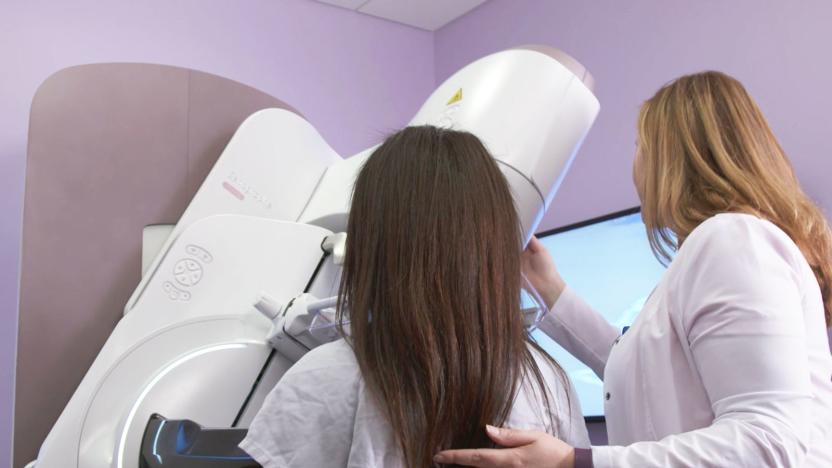
Control your own mammograms with new GE tech
GE introduced a new mammography system that gives patients a remote to control the compression part of the screening themselves. Giving them autonomy over the unpleasant, painful portion of the process ideally makes the whole thing more comfortable, which will hopefully bring in more folks who avoid mammograms -- and catch more instances of breast cancer.
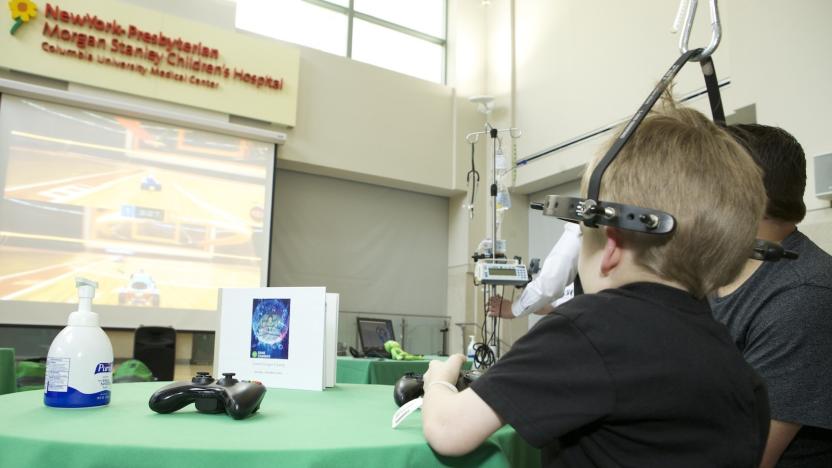
GameChanger brings virtual worlds to the kids who need it most
I was standing in a makeshift room at NewYork-Presbyterian Morgan Stanley Children's Hospital with a couple dozen people. Some of them were young children battling cancer, others were family and friends there to spend time with them. There was a handful of hospital staff. Spread out across the room were a young woman unknowingly about to get a scholarship, a social worker who had paid for a child's cable bill so that he could have some comfort in his last few weeks of life and team members of a charity who had brought everyone there so that sick children could have a little bit of fun for a few hours. It was an event that was both solemn and uplifting, and it was all centered around video games.

App detects pancreatic cancer from the whites of your eyes
Pancreatic cancer has a very low survival rate, with just nine percent of patients surviving past five years. A major contributor to this rate is the fact that once those with pancreatic cancer start to show symptoms, the disease is usually already quite advanced. But researchers at the University of Washington have come up with a simple and incredibly accurate way to test for the cancer that people can administer themselves.

Edible robot surgeons will cure you from the inside out
Back in 1985, the best robotic surgeon we had was the Puma 560, a manipulator arm just barely more advanced than Rocky Balboa's robo-butler. Just barely. The Puma was nevertheless revolutionary. It was the very first mechanical operator, progenitor to steady-handed robo-surgeons like the DaVinci system. But in the near future, robots will no longer be cutting into us -- from the outside, at least.
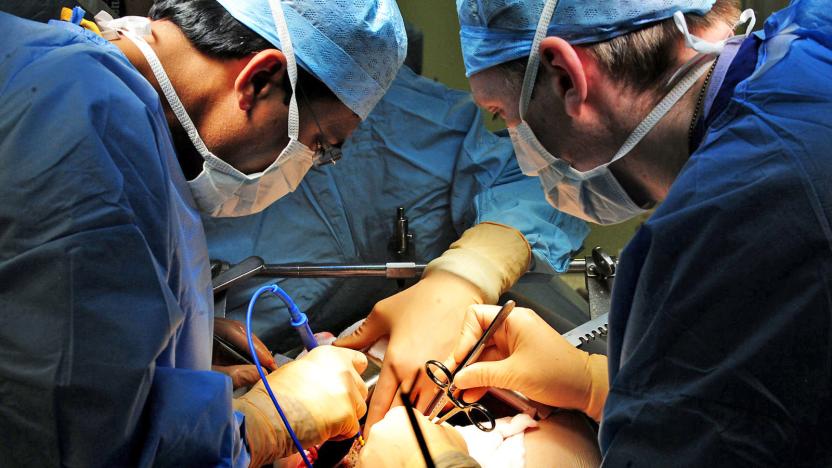
Microscope advances could prevent multiple breast cancer surgeries
A new type of microscope could drastically reduce the number of women having multiple breast cancer surgeries, researchers at the University of Washington claim. Until now, there's been no reliable way to determine whether surgeons have completely removed all cancerous tissue during surgery, meaning between 20 and 40 percent of women have to undergo second, third or even fourth procedures.

IBM’s Watson is really good at creating cancer treatment plans
Jeopardy-winning Watson is getting better and better at designing cancer treatments. New data presented this week at the American Society of Clinical Oncology's annual meeting show that IBM's Watson for Oncology suggests cancer treatments that are often in-line with what physicians recommend. The company also announced that the cancer care product, designed to help physicians diagnose and treat their patients, is being used by nine new medical centers around the world.

FDA approves a more 'personalized' cancer drug
Cancer treatments are becoming more personal. The Food and Drug Administration recently gave accelerated approval for Keytruda, a pre-existing drug from Merck, for use on patients diagnosed with solid tumors containing a specific biomarker. Rather than basing treatment on where the mutation originated, Keytruda will be used to treat microsatellite instability-high (MSI-H) cancers, those that are mismatch repair deficient (dMMR) and are otherwise not able to be surgically removed. These types of tumors affect how the DNA is repaired inside the cell.

Lab-grown stem cells could replace blood donations
Stem cells are kind of wild and can be used to create just about anything. Now, scientists have successfully created blood in a lab using the wundermaterial. As New Scientist points out, this could mean that certain cancer patients wouldn't have to undergo painful bone-marrow transplants in the future. And, that finding donors for such could no longer be an issue.

Lab-grown stem cells may carry an increased risk of cancer
If you've followed the latest medical research, you know that stem cells are a big deal. They let you repurpose cells so that you can theoretically grow them into whatever you need. However, scientists just got a good reason to be more cautious than they have in the past. A Harvard team has discovered that five of the 140 human embryonic stem cell lines registered for research use in US labs have cells whose mutations can cause cancer. Two of the lines have been used in human trials, too. None of those patients has developed cancer, thankfully, but there's a "very real risk" it could happen.
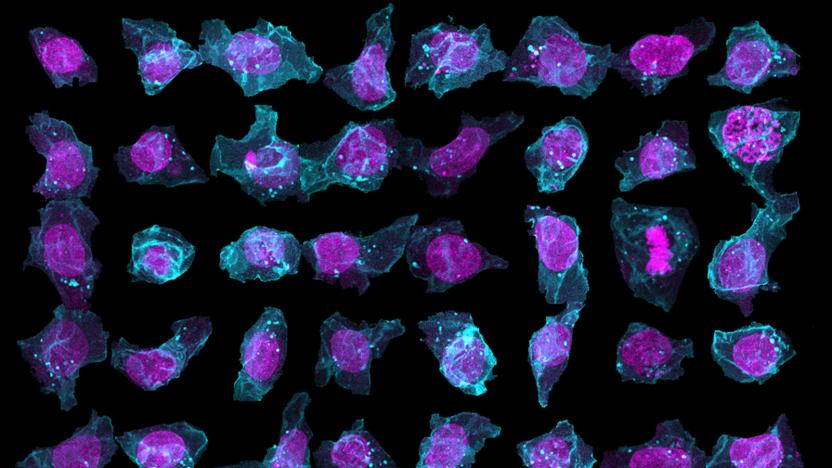
AI predicts the layout of human stem cells
The structures of stem cells can vary wildly, even if they're genetically identical -- and that could be critical to predicting the onset of diseases like cancer. But how do you know what a stem cell will look like until it's already formed? That's where the Allen Institute wants to help: it's launching an online database, the Allen Cell Explorer, where deep learning AI predicts the layout of human stem cells. You only need a pair of identifying structures, like the position of the nucleus, to fill out the rest of the cell's innards.








